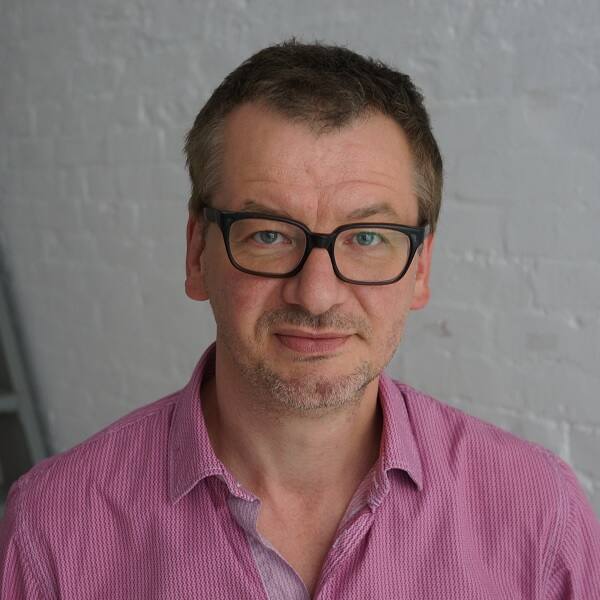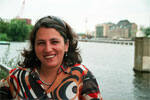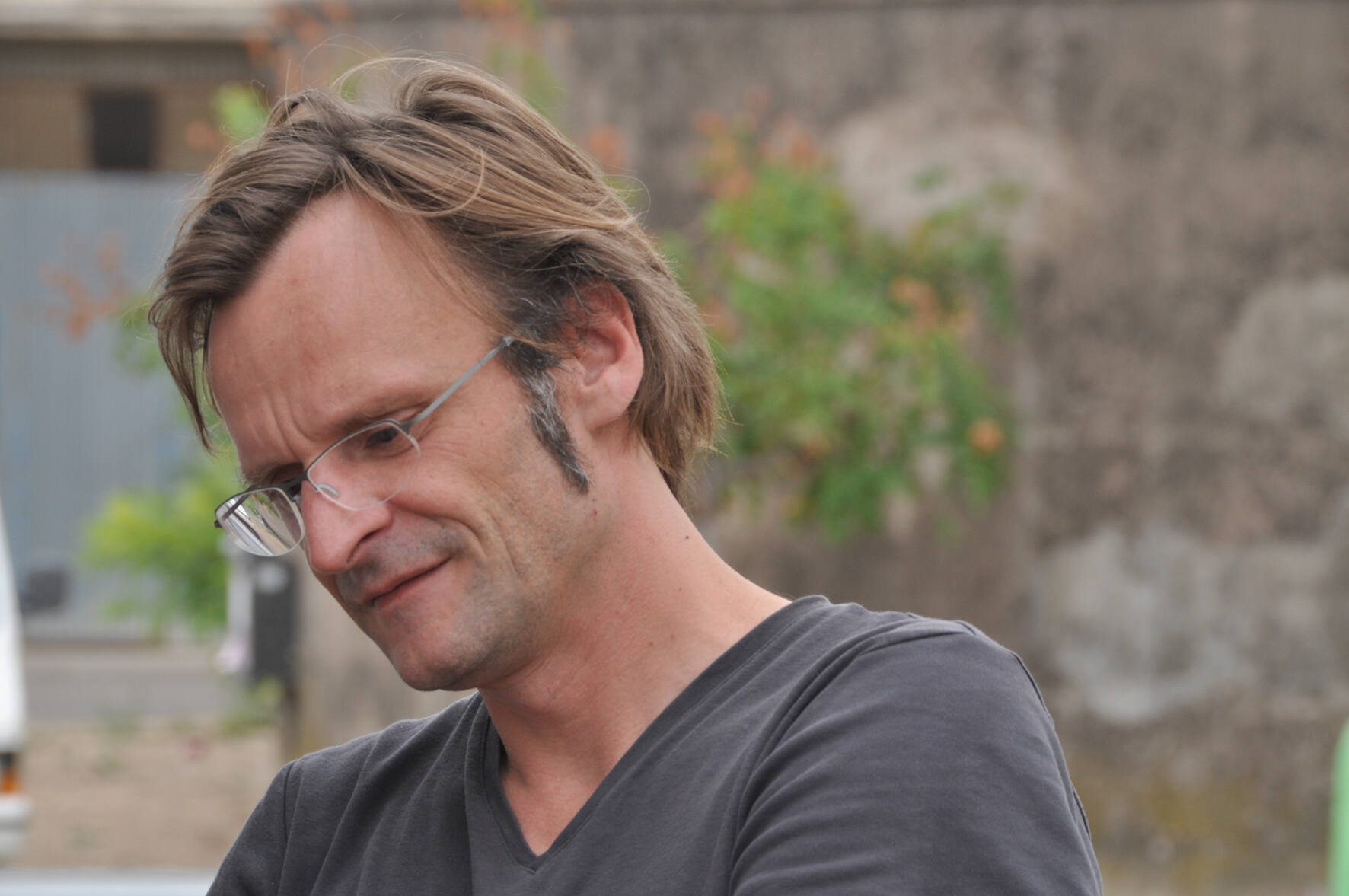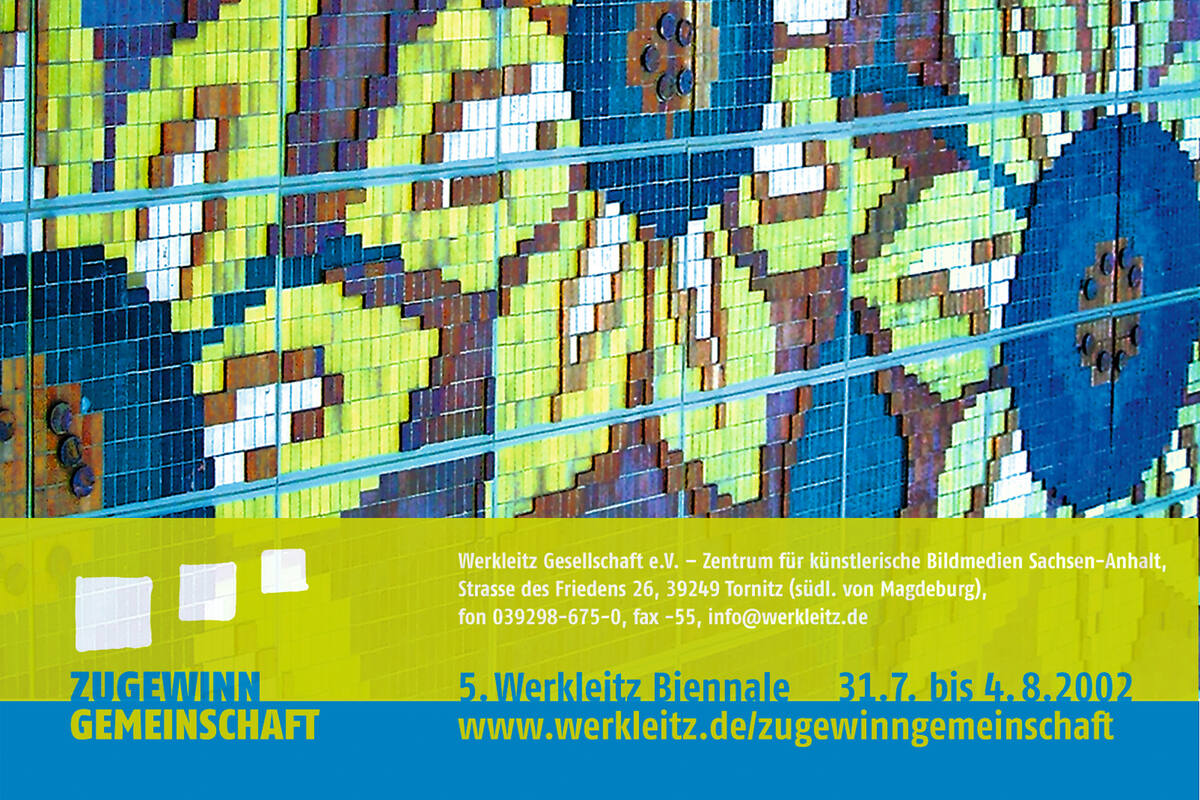5. Werkleitz Biennale 2002
Zugewinngemeinschaft
Personen
Media
The point of departure and focus for the curatorial conception of the 5th Werkleitz Biennial is the observation of a large number of conflict lines concomitant with practices of insulation, stigmatization or dissociation. These conflicts show clearly how social differences continue to be measured in terms of skin color, national affiliation and language, gender and sexuality, levels of education and affluence, and profession. Individuals are made to feel these differences in various ways: for example, as racially motivated physical assaults; as deportation resulting from state immigration policies; as the sycophancy of multi-cultural capitalism; or as inferior working conditions.
Where do such hierarchically organized social formations come from? Is oppression perhaps something that is also desired - as Rainer Werner Fassbinder seems to suggest in his film "Whity" (1970), using the example of a non-white domestic servant - or does it rather arise as a result of externally imposed role ascriptions: i.e., as cultural constructions of a dominant group? And in what way do these ascriptions correspond to the political and economic interests of neo-liberal politics? The 5th Werkleitz Biennial aims to thematize state architecture, cultural constructs, capitalistic economy, and desire as social powers that, in these politics of difference, partly contradict, and partly reinforce one another. On the one hand, the productivity and the consequences of these differences will be closely examined, and, on the other, an attempt will be made, in a test situation, to annul them by means of contrary models.
The name selected for the 5th Werkleitz Biennial, 'Zugewinngemeinschaft' ("Community of Surplus"), has a number of various connotations related to the field of insulations, interests, and desires. In German marital law, "Zugewinngemeinschaft" firstly means the separation of property: if a marital partnership is dissolved, only the material assets obtained as added value in the course of the alliance are divided up beween the parties involved - previous assets and debts remain tied to the respective person concerned. This legislation assumed that in each family there is, on the one hand, a bread-winner and, on the other, a partner who looks after the household and raises the children in an unpaid capacity, and is thus financially dependent.
The term "Zugewinngemeinschaft" can, however, also be understood in a much more far-reaching sense: if it is applied to a society that in many regards defines itself through added value (or is focused on it) and tends to want to exclude any other obligations, other political circumstances come into view. One could call a society a "Zugewinngemeinschaft" if its immigration policies favor immigration that promises gain: in other words, more people "who are of use to us, and fewer who use us." "Zugewinngemeinschaft" can also mean - very much in the spirit of its legal meaning in marital law - a society that, by signing a new contract, fixes a "zero base" and, in so doing, disencumbers itself of its previous history. The term "Zugewinngemeinschaft" could also be used for a society that claims to be multi-cultural as long as its own culture is being enriched in the fields of business, cinema or literature by the outstanding efforts of people - mostly men - of non-German descent, but behaves repressively as soon as its own culture and this culture's predominance are called into question. This was shown in the autumn of 2000 by the calls for a German "Leitkultur" ("dominant culture"), and in the debates that soon followed about the integration of non-German people. Those people who call for more xenophilia, while emphasizing the exoticism of the "others" instead of granting them normality, would also seem to be intent on added value.
A curating team of 12 artists and executives began the work of organizing the 5th Werkleitz Biennial 'Zugewinngemeinschaft' in July, 2001: Jochen Becker (Berlin), Reinhild Benning (Berlin), Robin Curtis (Berlin), Micz Flor (Berlin), Stephan Geene (Berlin), Merle Kröger (Berlin), Brigitta Kuster (Berlin/Basel), Renate Lorenz (Berlin), Philip Scheffner (Berlin), Dierk Schmidt (Berlin), Stefanie Sembill (Rostock) and Gerhard Wissner (Kassel). This team has chosen three 'objects' that will be used to create a metaphorical frame of reference for the 5th Werkleitz Biennial: a structuring field to which people can react. The 'objects' act as a source of impetus and materials for reflecting on culture and history - it may be that various Biennial contributions in the summer of 2002 will be readable as cover versions or reinterpretations of particular elements or motifs coming from these 'objects'.
The first object chosen was the relatively unknown film "Whity" by Rainer Werner Fassbinder (Germany, 1970, 95 min.) - a sort of "Western with weltschmerz" (Chuck Stephens), which is described as follows by the "Lexikon des internationalen Films (200/2001)":
"1878, somewhere in the West of the United States. In a mausoleum-like mansion resides the Nicholson family: the landowner Ben Nicholson (Ron Randell), his nymphomaniac second wife Katherine (Katrin Schaake), and two sons from his first marriage, the homosexual Frank (Ulli Lommel) and the mentally ill Davy (Harry Baer). The Nicholson's obsequious servant is the negro Whity (Günther Kaufmann), an illegitimate son of Ben. He only gains self-confidence when, one after the other, several members of the family ask him to kill other family members. Whity carries out the sentence that the Nicholsons have long since pronounced on themselves."
Although the servant of the Nicholson family - in the film his real name is Samuel King - is the (unacknowledged) son of the head of the household, and thus also a Nicholson, he is not a "white," but merely a "whity." His mother, who is also employed in the house as a cook, uses his name with contempt, feeling he is someone who is currying favor with his very oppressors. Whity is an object of desire for all members of the family (female and male), not only in a sexual regard, but also as a potential killer. Nevertheless, Whity loves his family - in his submission, he seems to be the only "normal character." Fassbinder's films clearly show the nearly unlimited autonomy of filmmakers back then, something today's "German film" can only dream of. Productions like this were only possible in those days because the basic mood of the 1970s demanded independent, political films - also in the service of an enlightened West German identity. Fassbinder exploited this demand (and the associated acceptance of the filmmaker's autonomy) to an extreme, touching upon themes ignored up to then, such as the repression of homosexuality. Many of Fassbinder's films, including "Whity", not only show a skeptical attitude towards the politicization of 1968, but also have a natural way of either leaving sexual clichés behind them, or pushing them to the limit. They also show Fassbinder's preoccupation with the then virulent "German question" - in an indirect and inoffensive fashion, however. At the *5th Werkleitz Biennial >Zugewinngemeinschaft one of the questions raised will be about how these aspects of the 70s can be read in relation to today's circumstances, and how things stood with the contemporaneous gestures of East German dissidents.
The second object chosen was the '10th World Festival of Youth and Students' in Berlin (1973). This was originally a meeting for the young East Germans who had rebuilt the stadium in Chauseestrasse in Berlin. The third and then the tenth 'World Festival' were once described by Andreas Hoffmann as follows:*
"Two million visitors from 104 countries have stopped by in Berlin in these two weeks in August. The forests of flags, the posters, cheers and march-pasts in front of the gentlemen on the VIP rostrum gave some idea of what sort of festivities still awaited the citizens. And, nonetheless, these were festive, cheerful days: a success for East Germany, whose charisma in those days Germany's sober West could do little to match. How the picture had changed 22 years later, at the end of July and beginning of August, 1973: the World Festival of Youth, this time the 10th, was held again; again, it began on the oval in Chausseestrasse, renamed the "Stadium of World Youth" (the former namesake, the head of state, died during the Festival). Where did the participants come from? From Poland, where martial law prevailed, from Czechoslovakia, the country of the faded spring, probably from defoliated Vietnam as well, and Chile, but not from the gulags of Sibiria. Those people who were not allowed to enter Berlin during the Festival were also excluded. And just behind the stadium ran the Wall, barely an anti-fascist protective wall, but rather an avalanche barrier against the prosperity divide." (from: Verschwundene Orte, TRANSIT Verlag).
From today's point of view, the photos and documents from the '10th World Festival of Youth and Students' convey an astonishing picture in many regards. For example, they show Erich Honecker standing on the stage next to the Black Panther activist and auratic pop resistance icon Angela Davis. Both of them gave speeches that must have barely differed from one another in content, and sent the same messages of greeting to all freedom movements in the world. And yet these two figures were diametrically opposed to one another, one standing for "internationalism from below" and the other for "internationalism from above." The World Festival of 1973 was an exciting spectacle and, above all, one full of contrasts: on the one hand, there were disciplined mass acrobatics in the sports arena in uniform costumes - groups of people turned into a figure, a body or a machine that allowed no trace of difference. On the other, at the fringes of the event, thousands of people from very different countries met up in a hippy-like, unregulated atmosphere. Formalized, state-organized internationalism was thus accompanied by an informal, transnational get-together that could perhaps be called a quasi-revolutionary state of emergency. Many participants in the World Festival at that time probably still sincerely believed in the development of a form of communism that would differ both from a capitalistic society, and the existing socialism of East Germany.
What emerges from the associative combination of Fassbinder's "Whity" and this World Festival? The early seventies were a time in which foreign workers were still able to be localized as the proletariat of neighboring countries, and the socialist countries and their political aims still offered an alternative to the West in many regards - economically as well. Whereas the World Festival stood for the state-organized version of internationalism and proclaimed this as a gesture of all-encompassing mass support, "Whity" gives a retrospective and basically pessimistic view of political attempts at emancipation. Fassbinder's films stood above all for the impossibility of identificational speech; that is, for cinematic utterances concerning the inability to find an appropriate language with regard to political context. Would it be possible to reactivate these two sides of a mood prevalent in the 1970s in order to create new political utopias (or aims)? At the *5th Werkleitz Biennial >Zugewinngemeinschaft the question will also be posed about how the relationship used to be between the belief in internationalism and the wall separating the two Germanies (or other borders, non-geographical ones as well) - and what it is like today.
In contrast to the other two 'objects', the third point of reference chosen - the statement or question "Open Borders?" - is an indirect element, one that may bring to mind concrete political contexts of the present day: the borders between "Germans" and immigrants, the anti-Islamism that is to be feared following September 2001, the tightening of domestic policy that has occurred since then, xenophobia, or the perspective of a new awareness of nationality perhaps becoming the focus of the election campaign in 2002, something which, it is to be feared, could mean the exclusion of non-Germans. "Open Borders?" can refer to national borders, but also to borders between different milieus, sexes, national affiliations, languages, levels of education and affluence, and profession. Where did the history of each of these borders begin? Within the context of the presentation of the 5th Werkleitz Biennial >Zugewinngemeinschaft*



